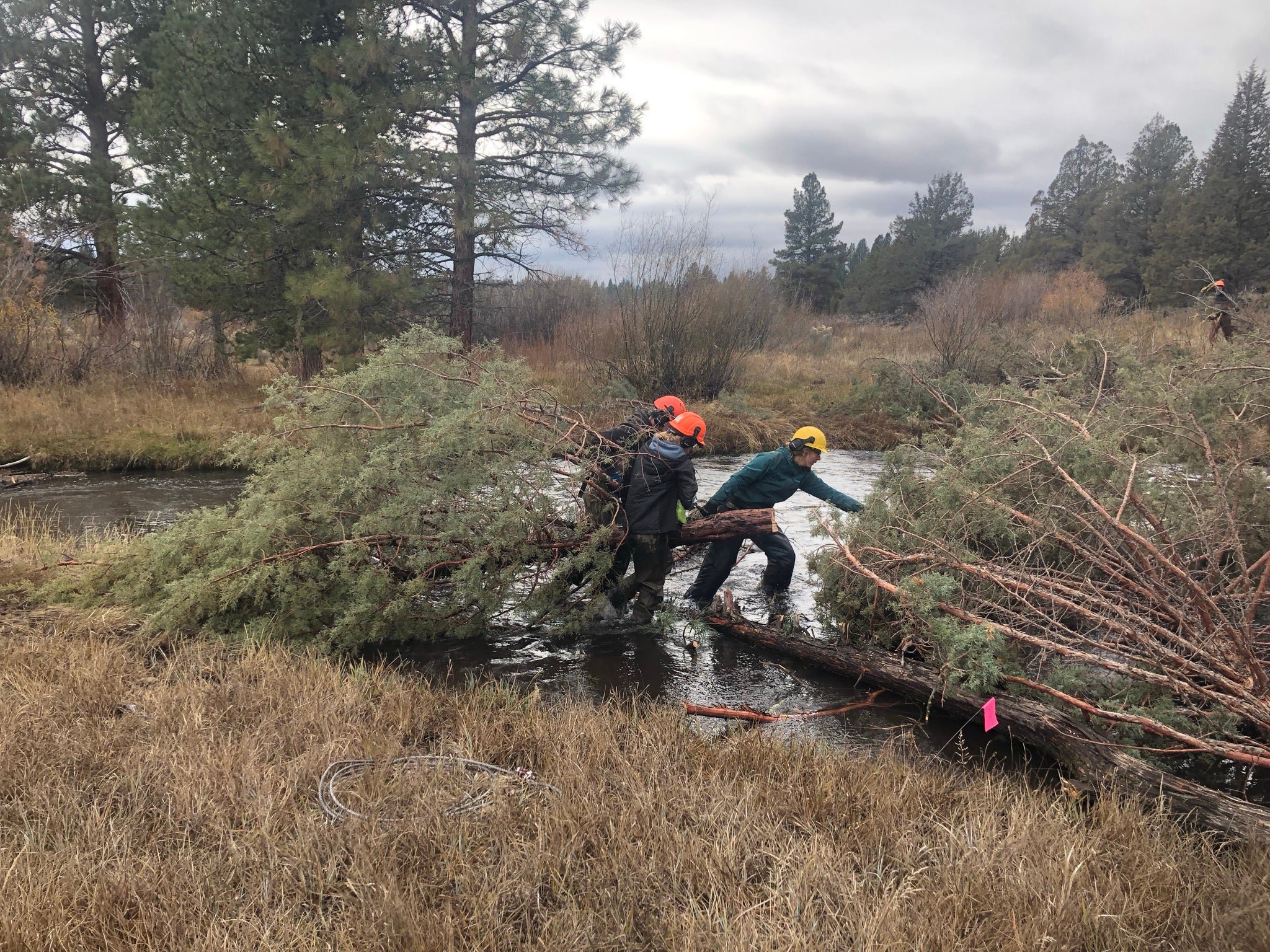Beaver Dams Help Wildfire-Ravaged Ecosystems Recover Long after Flames Subside, Isobel Whitcomb, Scientific American, February 7, 2022,
“Dams mop up debris that would otherwise kill fish and other downstream wildlife, new observations suggest.”
Oregon endured the third-largest wildfire in its recorded history last summer. The Bootleg Fire tore through the Upper Klamath Basin, an ecologically sensitive area that is home to multiple threatened and endangered species including the northern spotted owl and two fish—the koptu and c’waam (shortnose sucker and Lost River sucker)—that are culturally vital to the area’s Klamath Tribes. The fire left behind a charred landscape more than twice the size of New York City.
A complex of beaver dams at Dixon Creek, a tributary in the Sprague River watershed in Oregon, keeps riparian habitat lush and green amid a landscape charred by the 2021 Bootleg Fire. Credit: Charles Erdman/Trout Unlimited.
After the local fire season ended in autumn, Bill Tinniswood, a fisheries biologist with the Oregon Department of Fish and Wildlife, went out to survey the damage. Ash from the fire, which burned for more than a month, had clogged formerly pristine tributaries and turned them into black slurries. Thriving trout populations had disappeared, presumably choked to death by waterborne debris particles that deprived the fish of oxygen. “I was in total shock,” Tinniswood said. “It just looked like devastation.”
Then Tinniswood and his team stumbled upon something even more surprising, and somewhat encouraging: roughly five acres of pristine greenery amid an otherwise burned-out area along Dixon Creek, a tributary in the Sprague River watershed. At the center were roughly eight active beaver dams. But this was more than a refuge from fire, which hundreds of beaver dams are known to have afforded to other riparian areas. Whereas fish seemed to have disappeared upstream of the Dixon Creek dam site, the downstream water was crystal clear—and trout were thriving as though the fire had never happened. The dams and ponds appeared to have altered the hydrology of the landscape around them, Tinniswood says. The beavers had effectively built something like a water treatment plant that staved off fire-related contamination.
Similar dam-driven refuges have been documented from Colorado to California, Idaho to Wyoming. Now, scientists are discovering that these green sanctuaries are part of a larger story of how beaver dams contribute to fire resilience. Along with deterring the flames themselves, beaver dams and ponds also function as filters for ash and other fire-produced pollutants that enter waterways—thus maintaining water quality for fish, other aquatic animals, and humans—emerging evidence suggests.
After the Bootleg Fire in Oregon, conservation nonprofit Trout Unlimited rushed to build “beaver dam analogues” at Harmony Preserve, a private wildlife refuge along the North Fork Sprague River, before fall rains washed ash and other debris into the watershed. Here, contractors help to build post-assisted log structures, or PALS, which function much like beaver dam analogues. Credit: Charles Erdman/Trout Unlimited


